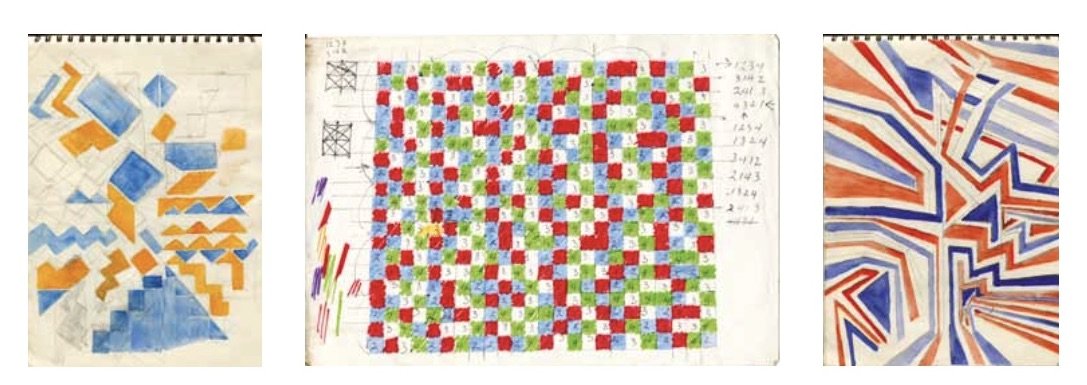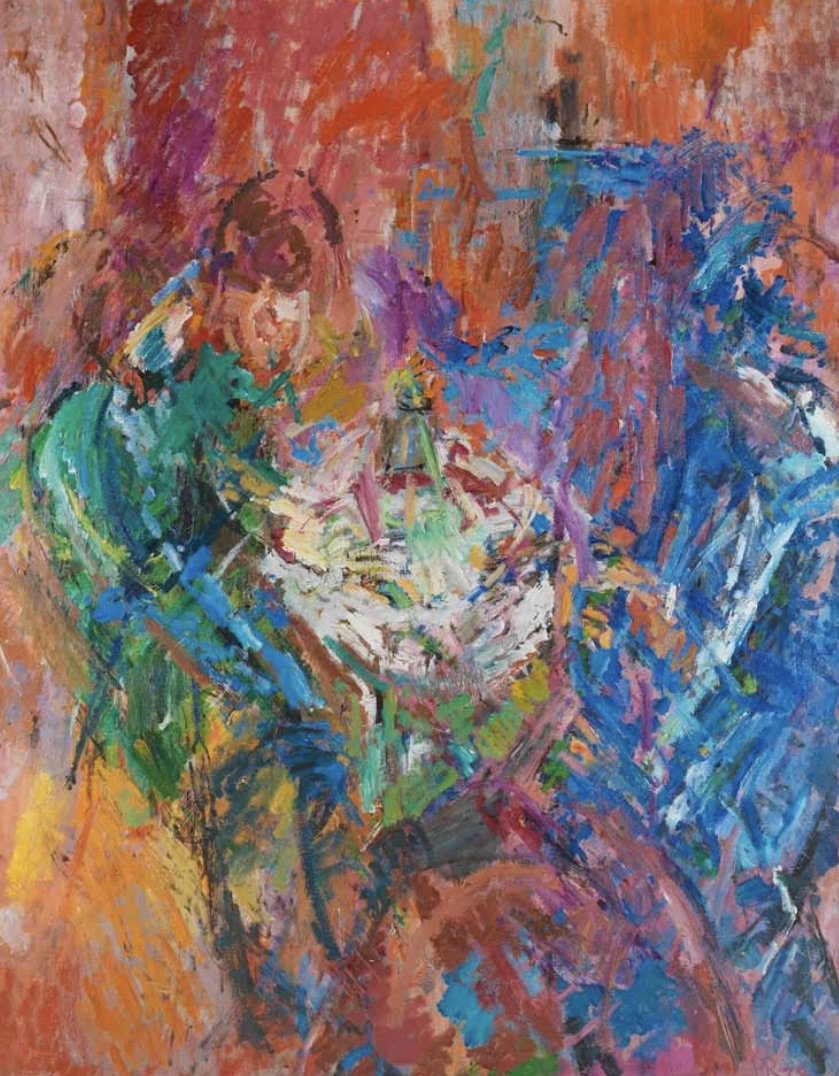The Red Studio (1974), oil on board; 122 x 122 cm
“When, in 1970, Miles felt himself to be too restricted by the style of his master, it was the spiritual side of Bomberg's teachings that remained with him. The immediate resulting work, The Red Studio, is surely one of the great mystical works of twentieth-century Britain, and one of the most luminously delirious."
- MICHAEL JACOBS
Richmond’s shift throughout the 1970s from the chthonic ‘spirit in the mass’ of his Ronda work to what became a nearly pyrotechnic colourism was not, however, straightforward.
By the late 1960s, Richmond had painted a large, confident body of work, but he was still reluctant to exhibit in London, mostly because he believed his paintings to still be too similar to Bomberg’s.
But around 1969, he completely changed his mind about this and, in fact, how he saw his work, when he met Harry Thubron. An artist and formative art educator, Thubron inspired by the Bauhaus and Herbert Read, encouraged his students to develop not only their technique, but also their visual literacy.
The two men became close friends despite their widely differing opinions of Bomberg and Picasso (which often made for explosive discussions), they nevertheless had a solid friendship. And Thubron had a decisive effect on Richmond’s work when he reintroduced him to the possibilities of colour theory.
Selection of colour exercises from Richmond’s sketchbooks (c. 1969-1971)
Fed up with wondering what would remain of his work if it were stripped of Bomberg’s influence, Richmond decided to exorcise this influence. He had always based his work on line and form and now wanted to intuit colour, so he stopped drawing and painting almost entirely and instead made colour exercises.
Following the example of Johannes Itten, Paul Klee and other Bauhaus masters, he filled notebooks with abstract, largely geometric diagrams to illustrate various contrasts of colour saturation, extension, complements and value.
“Whatever it is, the way you tell your story online can make all the difference.”
By the early 1970s, when he fully returned to painting,
Richmond’s style had changed further still, with forms now
achieved through an interlay of primary colour planes and
swirling brushwork, often emphasised by gestural under-
drawing. Following his self-imposed hiatus, several works,
including The Oak at Chipperfield (cat. no. 17) show a dramatic
shift in palette towards what appears to be an RGB colour
model: an additive method in which three light beams – one
red, one green and one blue – are joined to produce one colour,
whose intensity depends on its relationship to black or white.33
His next major work, The Red Studio (fig. 7) showed how he
used this renewed understanding of optics to strip his style of
angular expression in favour of a glowing multi-coloured clarity






